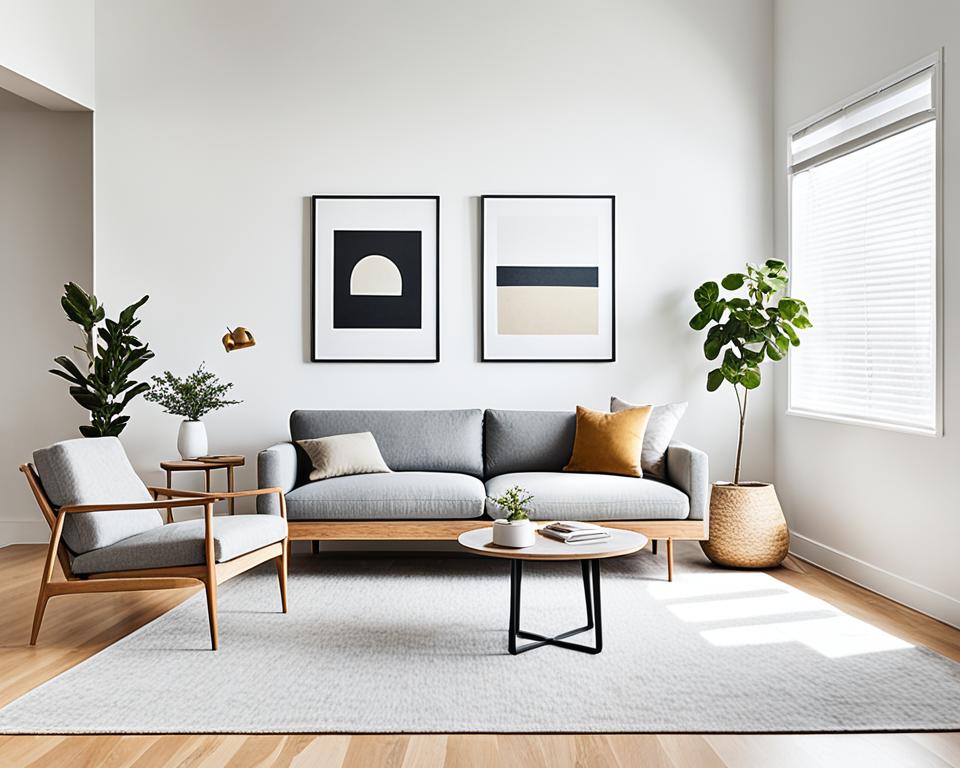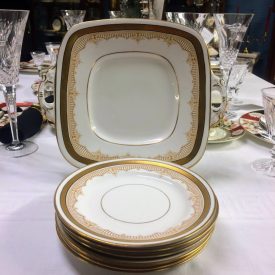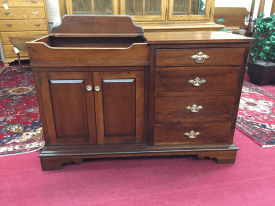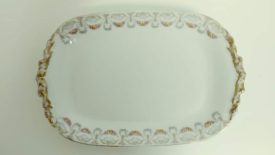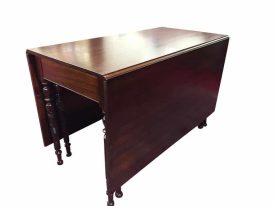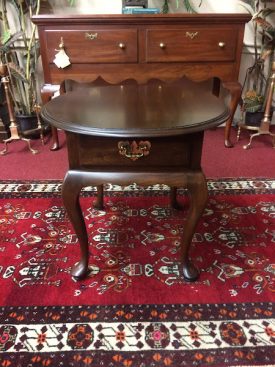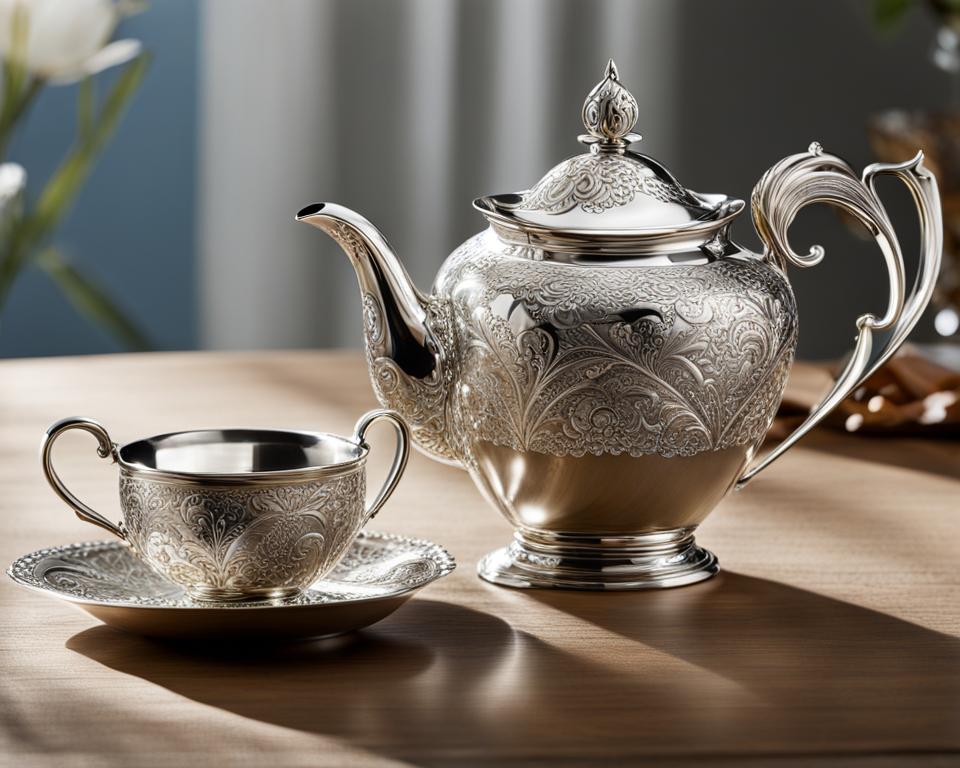Minimalist home decor is a popular interior design trend that focuses on simplicity, functionality, and a calming aesthetic. With the rising awareness of the need to declutter and create a peaceful environment, more people in the United States are embracing minimalist design in their homes. In this article, we will explore the key elements of minimalist interior design, the benefits of a minimalist space, and provide expert tips on how to achieve a minimalist look in your home.
Key Takeaways:
- Minimalist home decor emphasizes simplicity, functionality, and a calming aesthetic.
- Key elements of minimalist interior design include a neutral color palette, clean lines, and natural materials.
- Benefits of minimalist design include increased calm and relaxation, enhanced focus and productivity, and a more sustainable lifestyle.
- Expert tips for achieving a minimalist look in your home include decluttering, investing in timeless pieces, and embracing negative space.
- Applying minimalism to specific areas of your home, such as the living room, bedroom, and home office, can create a serene and clutter-free environment.
Key Elements of Minimalist Interior Design
Minimalist interior design is characterized by several key elements that contribute to its clean and uncluttered aesthetic. By incorporating these elements into your space, you can create a minimalist look that is both visually appealing and functional.
The Neutral Color Palette
A neutral color palette is a hallmark of minimalist design. Colors such as white, beige, and gray dominate the space, creating a sense of calm and simplicity. These neutral tones serve as a backdrop for the other elements of the room, allowing them to take center stage.
Less is More
In minimalist interior design, the philosophy of “less is more” reigns supreme. The focus is on keeping the space clutter-free and displaying only essential items. By embracing minimalism, you can create an environment that promotes tranquility and mindfulness.
Natural Materials
Natural materials are another important aspect of minimalist design. Materials such as wood and metal add warmth and texture to the space, creating a sense of organic beauty. These natural materials also contribute to the overall sustainability of the design.
Functionality
Functionality is a core principle of minimalist design. Every element in the room should serve a purpose and contribute to the overall functionality of the space. By focusing on functionality, you can create a living environment that is efficient and practical.
Clean Lines and Simple Shapes
Clean lines and simple shapes are key features of minimalist design. Straight lines and geometric shapes create a sense of order and balance in the space. These clean lines contribute to the overall streamlined and elegant look of minimalist interior design.
By incorporating these key elements into your space, you can achieve a minimalist look that is both visually stunning and functional. Embracing a neutral color palette, emphasizing simplicity, and utilizing natural materials are all essential aspects of minimalist design.
The Benefits of Minimalist Interior Design
Minimalist interior design offers a range of advantages that contribute to creating a serene and harmonious living space.
The first benefit is increased calm and relaxation. By decluttering and organizing the space, a minimalist home promotes a sense of calm, reducing visual distractions and allowing for a more peaceful atmosphere. The absence of unnecessary objects and the simplicity of the design create a soothing environment that fosters relaxation and tranquility.
Enhanced focus and productivity are also key benefits of minimalist interior design. With a clutter-free space, there are fewer distractions, enabling individuals to concentrate and work more efficiently. The minimalist approach encourages tidiness and organization, leading to improved focus and productivity.
Minimalist design creates an illusion of space, making a room appear larger and more open.
Another advantage of minimalist interior design is the illusion of space. By maximizing empty space, using light colors, and keeping the design simple, minimalist homes create a sense of openness and spaciousness. This can be particularly beneficial for smaller spaces or rooms with limited natural light, as the minimalist approach can make them feel larger and brighter.
Moreover, minimalist design is more sustainable, aligning with environmentally conscious lifestyles. The emphasis on simplicity and functionality promotes mindful consumption, encouraging individuals to consider the environmental impact of their choices. By using natural materials and focusing on quality over quantity, minimalist design reduces waste and contributes to a more sustainable future.
Benefits of Minimalist Interior Design:
- Increased calm and relaxation
- Enhanced focus and productivity
- Illusion of space
- More sustainable
Overall, embracing minimalist interior design offers numerous benefits, including increased calm and relaxation, enhanced focus and productivity, the illusion of space, and a more sustainable lifestyle. By implementing minimalist principles, individuals can create a harmonious and tranquil living environment that promotes well-being and mindful consumption.
Expert Tips to Achieve a Minimalist Look in Your Home
To achieve a minimalist look in your home, follow these expert tips:
- Start with a clean slate: Begin by decluttering and removing unnecessary items from your space. Clearing out the excess will create a clean and organized foundation for your minimalist design.
- Experiment with layouts: Try out different room layouts to find the one that maximizes space and creates an open and spacious feel. Don’t be afraid to rearrange furniture and accessories until you find the perfect arrangement.
- Invest in timeless pieces: Choose high-quality furniture and decor that will stand the test of time. Look for classic designs that won’t go out of style, allowing you to enjoy your minimalist space for years to come.
- Use multi-functional furniture: Make the most of limited space by opting for furniture with built-in storage or multi-functional features. This will help you maximize storage capabilities while maintaining a clutter-free environment.
- Let in natural light: Natural light enhances the minimalist aesthetic by adding brightness and a sense of spaciousness to your home. Keep curtains or blinds open during the day to allow sunlight to fill the room.
- Embrace negative space: Negative space, or empty space, is an important element of minimalist design. Keep surfaces clear and decluttered to create a sense of calm and simplicity.
- Let your home reflect your personal style: While minimalist design emphasizes simplicity, it’s still important to let your space reflect your personal style and tastes. Incorporate a few statement pieces that speak to your individuality and add character to your home.
By following these expert tips, you can achieve a minimalist look in your home that is both stylish and functional. Experiment with different design elements and find the balance that suits your personal style, while still embracing the principles of minimalism.
Putting Minimalism into Practice: Designing a Serene Living Room
When it comes to applying minimalism in your living room, the goal is to create a space that is serene and free from clutter. By following a few key principles, you can design a minimalist living room that is both beautiful and functional.
Minimalist Color Palette
Start by selecting a minimalist color palette that promotes a calm and peaceful atmosphere. Opt for neutral tones such as whites, beiges, and greys, which create a sense of simplicity and tranquility. These colors also provide a versatile backdrop that allows you to easily incorporate other elements into your living room design.
Clean Lines and Simple Shapes
Embrace clean lines and simple shapes in your furniture and decor choices. Minimalist design often features sleek and streamlined pieces that exude elegance and minimalism. Look for furniture with straight edges and minimalist silhouettes. Avoid ornate or overly decorative designs that may disrupt the clean aesthetic.
Natural Materials
Introduce natural materials, such as wood and metal, to add warmth and texture to your living room. Consider incorporating wooden furniture pieces, exposed metal finishes, or natural fiber rugs. These elements not only enhance the visual appeal of the space but also bring a sense of nature and earthiness to the room.
Functionality in the Living Room
Every element in your minimalist living room should serve a purpose and contribute to the overall functionality of the space. Opt for furniture with built-in storage solutions, such as coffee tables with hidden compartments or ottomans with storage space inside. This helps to keep the room organized and ensures that every item has its designated place.
By following these minimalist design principles, you can achieve a serene and inviting living room that promotes relaxation and a sense of well-being. Let your space breathe with simplicity and allow the beauty of minimalism to shine through.
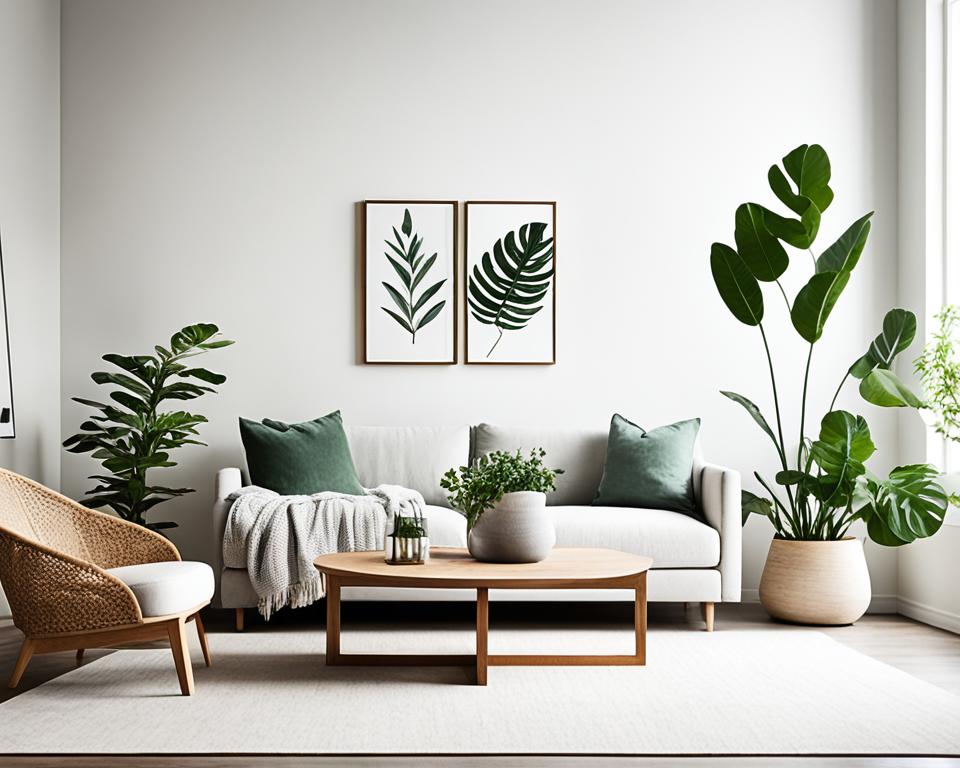
Creating a Minimalist Bedroom Retreat
A minimalist bedroom should be a peaceful retreat, providing a serene and clutter-free space for relaxation and rejuvenation. By incorporating minimalist design principles, you can create a soothing and calming atmosphere that promotes a restful night’s sleep.
Choose a Soothing Color Palette
One of the key elements of a minimalist bedroom is a soothing color palette. Opt for soft blues, muted grays, or neutral tones to create a calm and tranquil atmosphere. These colors promote relaxation and help to create a visually cohesive space.
Keep Surfaces Uncluttered
Minimalist bedrooms are characterized by uncluttered surfaces. Take advantage of storage solutions, such as under-bed drawers or floating shelves, to hide away items and maintain a clean and organized space. By keeping surfaces clear, you can create a sense of openness and tranquility.
Add Cozy Textures
To make your minimalist bedroom inviting and cozy, incorporate textures that create a warm and comfortable ambiance. Consider adding a plush rug next to the bed or opting for soft and comfortable bedding. These cozy textures add depth and create a welcoming atmosphere in your bedroom.
Opt for Simple and Functional Furniture
In a minimalist bedroom, furniture should be simple, functional, and free of unnecessary embellishments. Choose pieces that are streamlined and focus on clean lines and minimalistic design. Consider investing in a storage bed or a wardrobe with sleek and discreet storage options to maximize space and keep your bedroom clutter-free.
“A minimalist bedroom is all about creating a calm and serene environment. By incorporating only the essentials and focusing on simplicity, you can achieve a peaceful retreat that promotes relaxation and restful sleep.” – Interior Design Expert
Designing a Minimalist Home Office
When it comes to creating a minimalist home office, the key is to prioritize a clean and organized workspace. By implementing simple yet effective design strategies, you can transform your home office into a space that promotes productivity and reduces clutter. Let’s explore some minimalist home office ideas to help you achieve a clean and inspiring workspace.
- Utilize functional storage solutions: Keeping your supplies and materials organized and out of sight is essential in maintaining a minimalist home office. Invest in storage solutions such as shelves, cabinets, and desk organizers to ensure everything has its designated place.
- Embrace natural light: Bringing in as much natural light as possible can significantly enhance the ambiance of your home office. Position your desk near a window to take advantage of the natural light and create a bright and energizing environment.
- Incorporate comfortable and ergonomic furniture: To promote productivity and reduce physical strain, invest in comfortable and ergonomic furniture. Choose a chair with proper back support and adjustable features. Opt for a desk that provides ample workspace and allows for proper posture.
- Create an uncluttered desk: A cluttered desk can hinder focus and productivity. Keep your desk clean and free of unnecessary items. Only have essential items within reach, such as your computer, notebook, and a few pens. Use cable management solutions to keep cords organized and out of sight.
- Reduce visual distractions: Minimalist design is all about simplicity and decluttering. Keep your workspace visually clean by minimizing unnecessary decorations or excessive personal items. Promote a sense of focus by creating a calming environment free from distractions.
By implementing these minimalist home office ideas, you’ll create a clean and organized workspace that fosters productivity and inspires creativity. Remember, the goal is to keep your office functional while maintaining a minimalist aesthetic.
Creating a minimalist home office doesn’t have to be complicated. By prioritizing cleanliness, organization, and ergonomic comfort, you can design a workspace that promotes productivity and fosters a sense of calm. Embrace the minimalist approach and transform your home office into a sanctuary of productivity and inspiration.
Choosing Minimalist Furniture and Decor
When creating a minimalist space, it’s important to choose furniture and decor that align with the principles of simplicity and functionality. By prioritizing sleek and streamlined designs, you can achieve a minimalist style that is both visually appealing and practical.
Opt for furniture pieces with clean lines and simple shapes. Avoid ornate details and excessive embellishments, as these can disrupt the sleek aesthetic of minimalist decor. Instead, embrace the beauty of minimalism through the understated elegance of sleek and streamlined design.
Remember that quality is key in minimalist decor. Instead of filling your space with numerous items, focus on selecting high-quality pieces that will stand the test of time. Quality over quantity is the mantra of minimalist design, and investing in durable furniture and decor ensures that your space maintains its minimalist appeal for years to come.
Resist the urge to overcrowd the room with unnecessary items. Embrace the concept of “less is more” and let the selected furniture and decor pieces shine. By curating a thoughtful collection of minimalist furniture and decor, you can create a serene and uncluttered atmosphere in your space.
In summary, when curating your minimalist space, prioritize sleek and streamlined designs, choose furniture with clean lines and simple shapes, focus on quality over quantity, and avoid cluttering the room with unnecessary items. By following these guidelines, you can create a minimalist aesthetic that is both visually appealing and conducive to a calm and peaceful environment.
Minimalist Home Decor: The Power of Negative Space
Negative space plays a pivotal role in minimalist home decor, elevating its aesthetic appeal. By embracing empty space, you can achieve visual balance and simplicity in your living environment. A key principle of minimalist design is to keep surfaces uncluttered, allowing the elements in the room to breathe and stand out.
When you incorporate negative space into your minimalist space, you create a sense of serenity and calm. Instead of feeling overwhelmed by visual stimuli, the eye can rest and appreciate the elements that are present. This uncluttered approach promotes a peaceful and tranquil atmosphere, fostering a mindful and relaxed mindset.
Embracing negative space is like giving your home a gentle breath of fresh air.
Minimalist aesthetics thrive on simplicity. By eliminating unnecessary visual elements and distractions, you can achieve a clean and uncluttered look that is both visually appealing and calming. This intentional emptiness invites the viewer to engage with the thoughtful arrangement of objects and furniture, creating a sense of harmony and tranquility.
To further emphasize the power of negative space, imagine a minimalist living room with a single statement sofa placed against an unadorned wall. The simplicity of the room allows the eye to appreciate the clean lines and minimalistic design of the sofa, effortlessly drawing attention to its beauty and function.
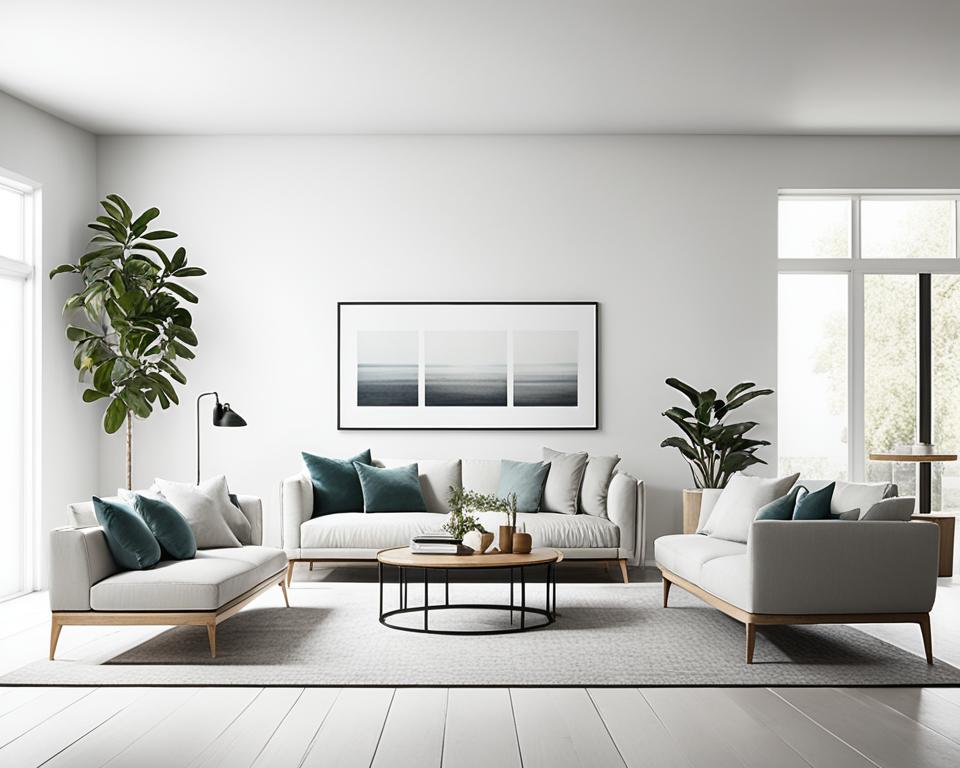
A visually balanced space is essential in minimalist interior design. Negative space helps create this balance by allowing each element to have its own breathing room within the larger composition. Whether it’s a strategically placed piece of artwork or a carefully curated display, negative space allows these elements to stand out and make a statement.
By incorporating negative space into your minimalist home decor, you can enhance the overall aesthetic and create a serene living environment. Embrace the beauty of simplicity, uncluttered surfaces, and visual balance to transform your space into a sanctuary of minimalist tranquility.
Conclusion
Minimalist home decor and interior design offer a simple and functional approach to creating a peaceful and serene environment in your home. By embracing the principles of minimalism, you can transform your space into a calming oasis that promotes tranquility and relaxation.
Decluttering is at the core of minimalist design, allowing you to eliminate unnecessary items and create a sense of order and organization. By removing the excess, you can focus on the essentials and create a serene space that fosters a peaceful atmosphere.
The minimalist aesthetic emphasizes simplicity and functionality, with clean lines, uncluttered surfaces, and a focus on quality over quantity. By incorporating natural materials and a neutral color palette, you can enhance the overall aesthetic and create a serene ambiance in your home.
Embrace the power of minimalism and enjoy the benefits of a serene and clutter-free living space. By designing your home with simplicity and functionality in mind, you can create a peaceful environment that promotes relaxation, calmness, and a sense of well-being.
FAQ
What is minimalist interior design?
Minimalist interior design is a popular trend that focuses on simplicity, functionality, and a calming aesthetic. It incorporates a neutral color palette, clean lines, simple shapes, and natural materials.
What are the benefits of minimalist interior design?
Minimalist interior design promotes a sense of calm and relaxation, enhances focus and productivity, creates the illusion of more space, and promotes sustainable living.
How can I achieve a minimalist look in my home?
Start by decluttering and removing unnecessary items, experiment with different room layouts, invest in high-quality and timeless furniture, utilize multi-functional pieces, let in natural light, embrace negative space, and choose statement pieces that reflect your personal style.
How can I create a minimalist living room?
Choose a minimalist color palette, incorporate clean lines and simple shapes, use natural materials, and ensure that every element in your living room serves a purpose and contributes to the overall functionality of the space.
How can I create a minimalist bedroom?
Select a soothing color palette, keep surfaces uncluttered, utilize storage solutions, add cozy textures, and opt for simple and functional furniture that contributes to a restful environment.
How can I design a minimalist home office?
Prioritize a clean and organized workspace, utilize functional storage solutions, let in natural light, and invest in comfortable and ergonomic furniture to promote productivity and reduce clutter.
What should I consider when choosing minimalist furniture and decor?
Prioritize sleek and streamlined designs, choose furniture with clean lines and simple shapes, opt for high-quality pieces, and resist the urge to overcrowd the room with unnecessary items.
What is negative space in minimalist home decor?
Negative space refers to empty space intentionally left unoccupied in a minimalist space. It creates visual balance and simplicity, allowing the eye to rest and appreciate the elements that are present.
How does minimalist home decor create a peaceful environment?
By embracing simplicity and functionality, minimalist home decor promotes a decluttered and organized space, which in turn promotes a sense of calm and relaxation.

